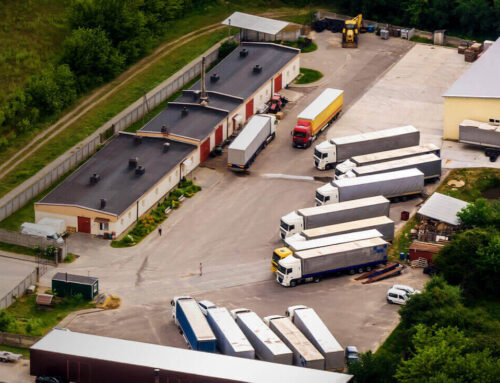Every plant runs on rhythm. Trucks arriving too early or too late break that rhythm, and the cost isn’t just idle time; it’s lost production. In the automotive and manufacturing sectors, where precision matters at every step, dock scheduling ensures that material flows match the pulse of the shop floor. It’s how logistics teams move from firefighting delays to orchestrating uptime.
What is Dock Scheduling and Why It Matters
Dock scheduling refers to the structured planning and allocation of time slots for trucks arriving at loading and unloading docks. It ensures that vehicles are processed with minimal delay while optimizing the use of dock doors, labor, and equipment. In high-volume operations, a well-executed dock scheduling process can be the difference between a smooth daily rhythm and a costly operational bottleneck.
Common Challenges in Dock Operations
- Slot Clashes: Multiple trucks arrive simultaneously due to poor visibility or manual booking systems.
- Unplanned Vehicle Arrivals: Carriers show up unannounced, disrupting schedules and causing congestion.
- Idle Workforce or Equipment: Delays or absent trucks lead to underutilized staff and handling equipment.
- Cross-Docking Complexity: Vehicles requiring multiple dock visits for loading and unloading different goods complicate scheduling and increase the risk of delays.
How Dock Scheduling Software Optimizes Operations
- Automated Slot Allocation: Optimizes dock assignments based on vehicle type, cargo, priority, and availability.
- Dynamic Rescheduling: Adjusts dock assignments in real-time to accommodate delays or early arrivals.
- Collaborative Interfaces: Allows carriers, warehouse teams, and transport planners to coordinate arrivals through real-time portals.
Integration with TMS and YMS
Dock scheduling’s effectiveness is amplified when integrated with:
- TMS (Transport Management Systems): Enables proactive scheduling based on dispatch and ETA data.
- YMS (Yard Management Systems): Synchronizes dock activity with vehicle movements inside the yard, ensuring timely staging for unloading or dispatch.
Such integrations eliminate blind spots and enable synchronized logistics planning.
KPI Improvements with Dock Scheduling
- Reduced Truck Turnaround Time: Efficient scheduling minimizes waiting periods.
- Improved Carrier Experience: Faster check-ins and predictable wait times enhance satisfaction.
- Higher Dock Utilization: Optimized scheduling ensures minimal idle time.
- Better Labor Forecasting: Predictable workloads allow for efficient staffing.
For instance, a large retail distribution center faced constant dock congestion, leading to excessive detention charges and delays. After implementing a dock appointment scheduling application, they experienced dramatic improvements in efficiency and reduced bottlenecks.
Axestrack’s CPL: Enhancing Dock Automation
Axestrack’s Connected Plant Logistics (CPL) platform offers a comprehensive dock automation solution:
- Integrated Scheduling: Combines dock scheduling with yard and transport management for end-to-end visibility.
- Real-Time Dashboards: Provide live updates on dock status, vehicle positions, and scheduling adherence.
- Flexible Workflows: Allow on-the-fly adjustments to accommodate dynamic operational needs.
- Hardware Integration: Seamlessly connects with RFID, ANPR, and sensor systems for automated vehicle identification and dock assignment.
By leveraging CPL, customers experience reduced turnaround times, improved resource utilization, and enhanced operational efficiency.
Conclusion
Efficient dock scheduling is crucial for modern logistics operations. By addressing common challenges, integrating with existing systems, and leveraging both software and hardware solutions, businesses can eliminate bottlenecks and enhance overall performance. Platforms like Axestrack’s CPL exemplify how comprehensive dock automation can drive significant improvements in throughput, resource utilization, and customer satisfaction.





